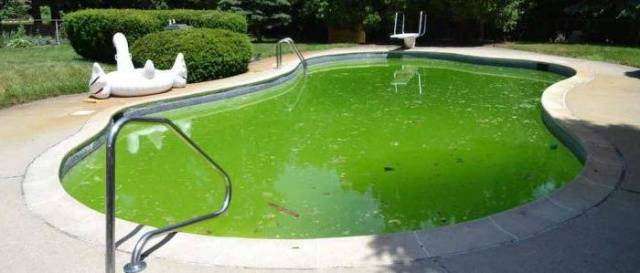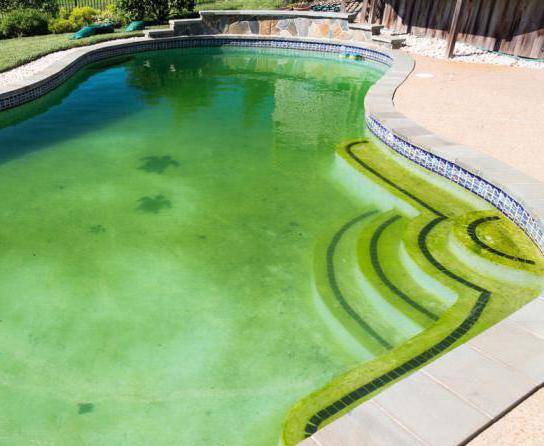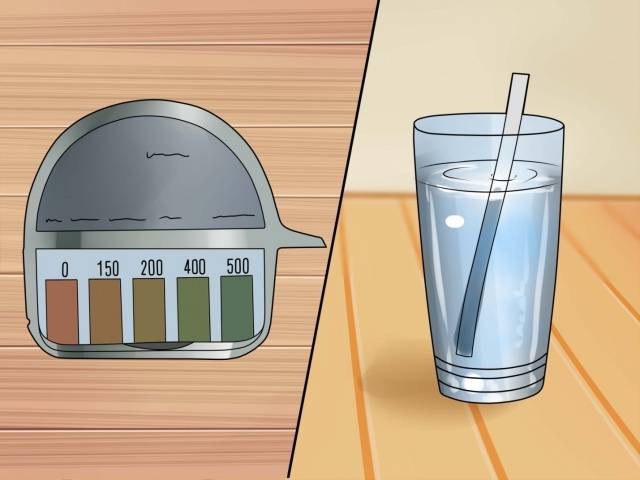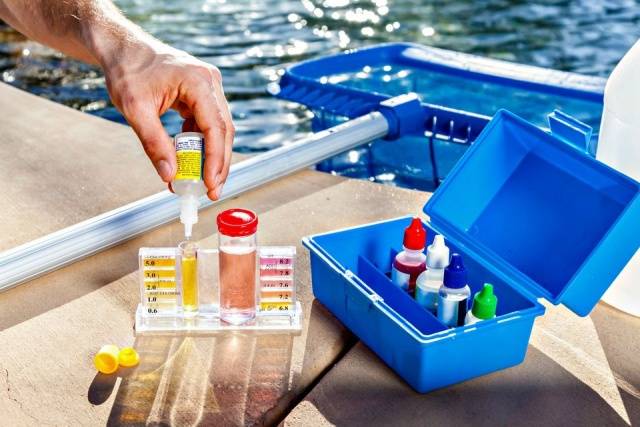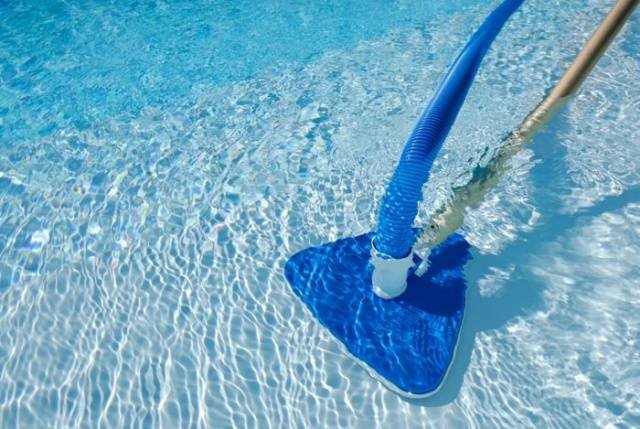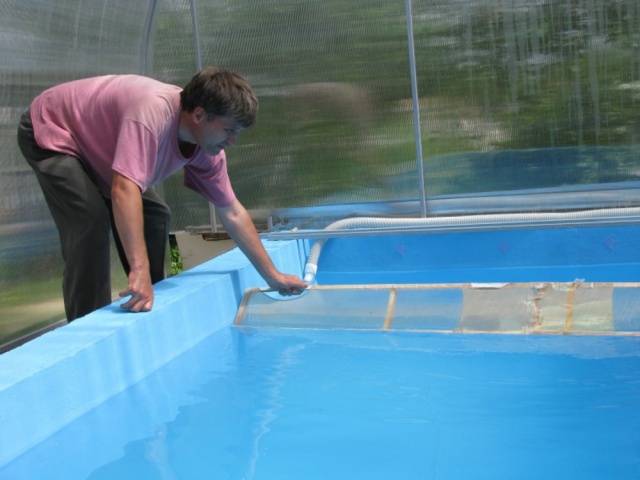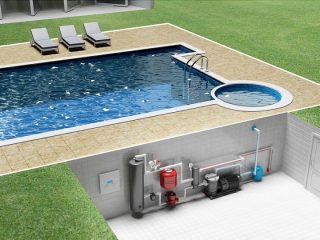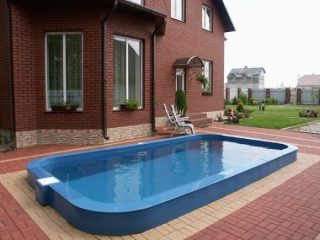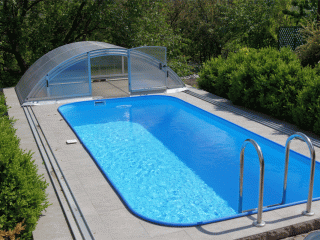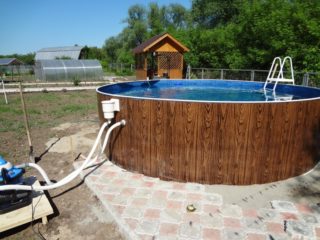Content
If the pool becomes clogged with large debris, resort to mechanical means cleaning... Filters cope with impurities of clay and sand. When the water in the pool turns green, not every owner knows what to do with the current situation. The problem often arises in hot summers. The main cause of water bloom is microscopic green algae that multiply at an instantaneous rate. However, there are still other factors. The owner of the pool should know how to get rid of the problem, because it is not suitable for swimming.
Reasons for the reproduction of algae
To find a way to get rid of the pollution, you need to know why the water in the pool turns green, and figure out if the owner himself is to blame. There are several reasons for flowering:
- The most common cause of green water is the proliferation of algae in a favorable environment. The weather is hot in summer. Water heats up quickly, and practically does not cool down at night. Ideal conditions are created for the growth of algae. They differ from the usual inhabitants of rivers and lakes. The algae are microscopic, not visible to the eye, but there are so many of them that a green tint of the water is created.Advice! Algae spores are present in well water. After pumping the pool, they begin to multiply rapidly. Chlorinated tap water. If used to pump a pool, the flowering process will not start immediately.
- Green water appears in the pool with poor filtration. Cheap filters are not capable of trapping algae spores. If you rarely clean the clogged cartridges, then bloom will begin right inside the filter. Then the algae will get into the pool when pumping water. Even in the absence of filtration, the font will begin to bloom. Algae spores are carried by birds, wind, animals and, once they get into stagnant warm water, they begin to develop.
- Sometimes the culprit is the person himself when he contributes funds for the pool so that water does not bloom without observing the norm. Chlorine is an ardent enemy of living organisms. However, at a low rate, the chemical does not cope with its task. A large norm, on the contrary, violates the acid-base balance. In both cases, the water will turn green.
- Most chlorine-containing preparations have a stabilizing additive - cyanuric acid, which protects the active ingredient from UV damage. At high concentrations, the acid destroys chlorine. The pool becomes chemically contaminated. Water does not turn green from algae. Chemical pollution cannot be dealt with. The water will have to be drained.
- Pool water that is green and cloudy may have a brown tint. This is observed with an overabundance of iron impurities. The smell will help to make the correct diagnosis. Algae gives off an unpleasant stench. Green-brown water from iron impurities remains odorless. The problem is solved by changing the level of acid balance and the introduction of coagulants.
Knowing the reason for flowering, it will turn out to correctly develop methods of struggle.
Blooming is better prevented
It is easier to do so that the water in the pool does not bloom than to perform a series of laborious cleaning procedures later. Not all algae have a green tint and during initial reproduction it is difficult to recognize them by the color of the water. Three signs will indicate the beginning of flowering:
- when touching the walls of the pool, slippery mucus is felt on the hand;
- spots in the form of foam float on the water;
- the water began to smell bad.
Having noticed one of the signs, you need to take urgent action.
The following measures will help prevent or at least postpone the flowering process:
- Thorough daily water filtration, especially in hot weather. The cartridges are thoroughly rinsed, the more often the better. When signs of flowering appear, filtration is carried out around the clock.
- For disinfection, chlorine is added together with algides. Algae, when multiplying, create a strong shell. Algides violate the integrity of the defense, and chlorine destroys a living organism. Alone, the substances are inactive.
- Constant monitoring of the level of acid balance will identify the problem at an early stage.
- The use of chlorine-containing preparations requires alternation to prevent water stabilization above normal.
If measures were not taken in time or the process was unsuccessful, they begin to solve the problem in other ways.
Bloom control
The answer to the question when the pool blooms, what to do will be the instruction, which proposes to solve the problem in three steps.
Preparatory work
Even at the initial stage, so that the pool does not bloom, you can perform a number of preparatory measures. The hot tub owner must have a kit for testing chlorine in the water. If, after checking, it turns out that the level of a chemical has decreased, this is the first signal that flowering begins. Shocking the pool can help prevent algae from growing.
The chlorine level and pH in the water must be stable. If the balance is disturbed by the introduction of an acid or base, an indicator of 7.8 is achieved. The process consists of the following steps:
- the pool circulation pump is started up;
- to increase the pH level, sodium carbonate is introduced;
- reduce the pH with sodium bisulfate.
When restoring balance, it is important to ensure that the filter is working properly. Leaves and other large debris are mechanically removed from the water. The filtration is left to work for a day. During breaks, it is advisable to rinse the cartridges.
The walls and bottom of the pool are wiped with a brush attached to a long telescopic handle. Green algae that cause water bloom adhere to uneven surfaces. A large accumulation is formed at the bends, the places where the communications are connected. All difficult places are carefully cleaned out.
Shocking
The second step in getting rid of flowering is to treat the font with a shocker. The preparation contains a high concentration of chlorine, which destroys algae. It is optimal to give preference to a shocker with 70% active substance content. The drug is administered strictly following the dose indicated in the instructions.
If the flowering has already started and the water has turned very green, a second shock is carried out. When the drug starts working, the water will become cloudy, even too dirty. This is normal. During the filtration process, everything will settle on the cartridges. When the chlorine level drops to 5.0, an algicide is added to the water, leaving it to work for a day.
The destroyed algae lose their green color and settle to the bottom of the pool. Most of the sediment will remain inside the filter. The cartridges will need to be cleaned frequently. This will help unload the cleaning system.
Final works
At the end of the shock, repeat the mechanical cleaning of the pool. The walls are carefully brushed, then the vacuum cleaner is started up. At this stage, you can use a foculant. The preparation introduced into the water will bind the dead algae and it will be easier to collect them with a vacuum cleaner.
The filtering system is not stopped until the algae have completely disappeared. After the shocker, the water will become crystal clear. In case of negative results, all shocking steps are repeated.The end of the water purification is to repeat the test with a set for the pool.
The video shows the weekly water purification:
Blooming with hydrogen peroxide
The easiest way to solve the problem so that the pool does not turn green is to treat it with hydrogen peroxide. The drug is used with a concentration of 37%, and it is called perhydrol. When calculating the dosage, the ratio is adhered to: 700 ml of peroxide per 1 m3water. If the font blooms strongly, add a double dose of perhydrol. The solution is poured in portions along the perimeter of the pool walls. The circulation is constantly running so that the filter traps the sediment.
Cleaning by folk methods
The simplest folk way to get rid of the bloom is to drain all the green water, wash the bowl and re-pump it. The option is good, but it is not always possible to often drain a lot of dirty liquid. If there are no problems with disposal, then it is better to perform the next new injection of the font from the city water supply. The water contains chlorine impurities used in disinfection stations that will prevent rapid flowering again.
As a folk method, tablets are used for the pool so that the water does not bloom, but they are called hydropyrite. Dissolving, they release concentrated hydrogen peroxide and urea. The latter substance does not affect the algae in any way and remains in the pool water. Benefits are brought only by peroxide, the concentration of which contains about 35%. The dose is 1 kg of hydropyrite per 2 m3 water.
The blooming effect is destroyed at a concentration of 0.9 g of copper per 1 m3 water. Having calculated the volume of the pool, a solution of copper sulfate is introduced. For the best effect, add 3 parts of salt to 1 part of the preparation.
It is best to prevent pool bloom early on and not trigger pollution. It is difficult to dispose of large amounts of water, and you cannot swim in it.
